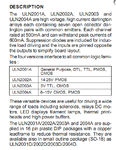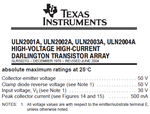udhay_cit
Full Member level 6
I need to drive a ULN2004 IC with 24V input. The nominal allowable driving input voltage of the IC is 5V so I need to add a voltage reducer to the input. Please give your feedback about which one of the following circuit is most recommended...!
Thanks & Regards
Udhay
Thanks & Regards
Udhay





